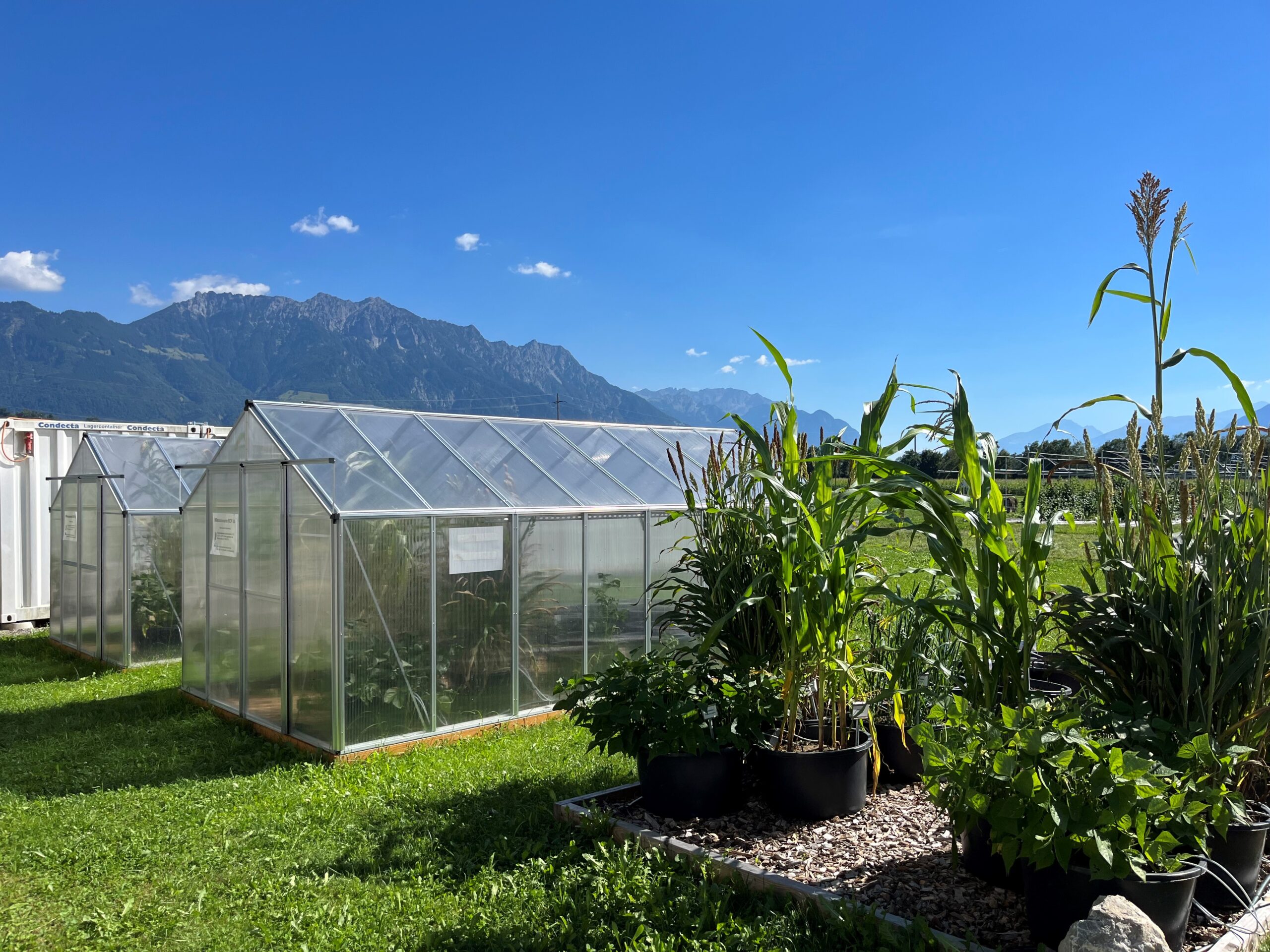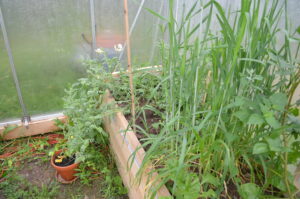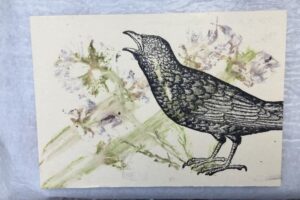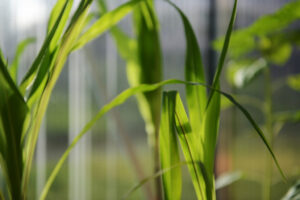The Climate Garden at the BZBS in Salez
Every week we receive reports on climate change, heat records and climate scenarios from the media. Imagining what future global warming of at least 1.5°C will feel like for us and how it will affect our flora remains a challenge, regardless of this year’s heatwaves. The Climate Garden 2085 enables numerous classes to discover the Climate Garden together with dedicated teachers as part of their general education lessons. The climate garden also offers a special opportunity for a student studying to become an agricultural technician HF. As part of her final thesis, she is working on a question about fodder legumes with progressive climate change. However, we are not only able to welcome students to the climate garden; other interested parties are also guided through the climate garden on various occasions.
The greenhouses of the climate garden were built in mid-March with the active support of the technical service at the LZSG Agricultural Centre. Fortunately, they always found a creative and functional solution to the challenges during construction. The climate garden in Salez consists of two greenhouses and an open-air facility. In the open-air facility, the plants grow in the current climate. The climate scenarios RCP 2.6 and RCP 8.5 are simulated in the two greenhouses. The temperature in the greenhouses is controlled by two air conditioning units, for which the average weekly temperature is set as the target temperature. If the temperature is above the set target temperature, the appliance cools and accordingly the appliance heats if the temperature is below the set target temperature. When we were setting it up, we had no idea that the summer of 2022 would be an extremely hot one. The air conditioning units were under a lot of strain when it came to cooling and were supported by the retrofitting of temperature-dependent window openers. Once we had the climate regulation of the greenhouses under control, we were able to start sowing. We sowed various important crops in our daily diet to contrast their suitability for cultivation under two different climate scenarios compared to the current climate. In total, we are comparing seven different crops. These include potatoes, spring oats and bush beans as representatives of the C3 plants and maize and sorghum as C4 plants. Within the greenhouses, the same plants are grown under different irrigation conditions. In one half of the greenhouse, the plants are supplied with sufficient water; in the other half, the amount of water used for irrigation is reduced by 30%. The water supply to the plants is ensured by drip irrigation. In the open-air system, the plants receive water from precipitation in addition to irrigation. If the amount of precipitation is high, the water supply from irrigation is reduced. The climate in the greenhouses is monitored by sensors using several parameters. In addition to air temperature, humidity, soil moisture and the electrical conductivity of the soil are also measured. The weather station permanently installed in Salez is used to monitor the climate in the open-air system.
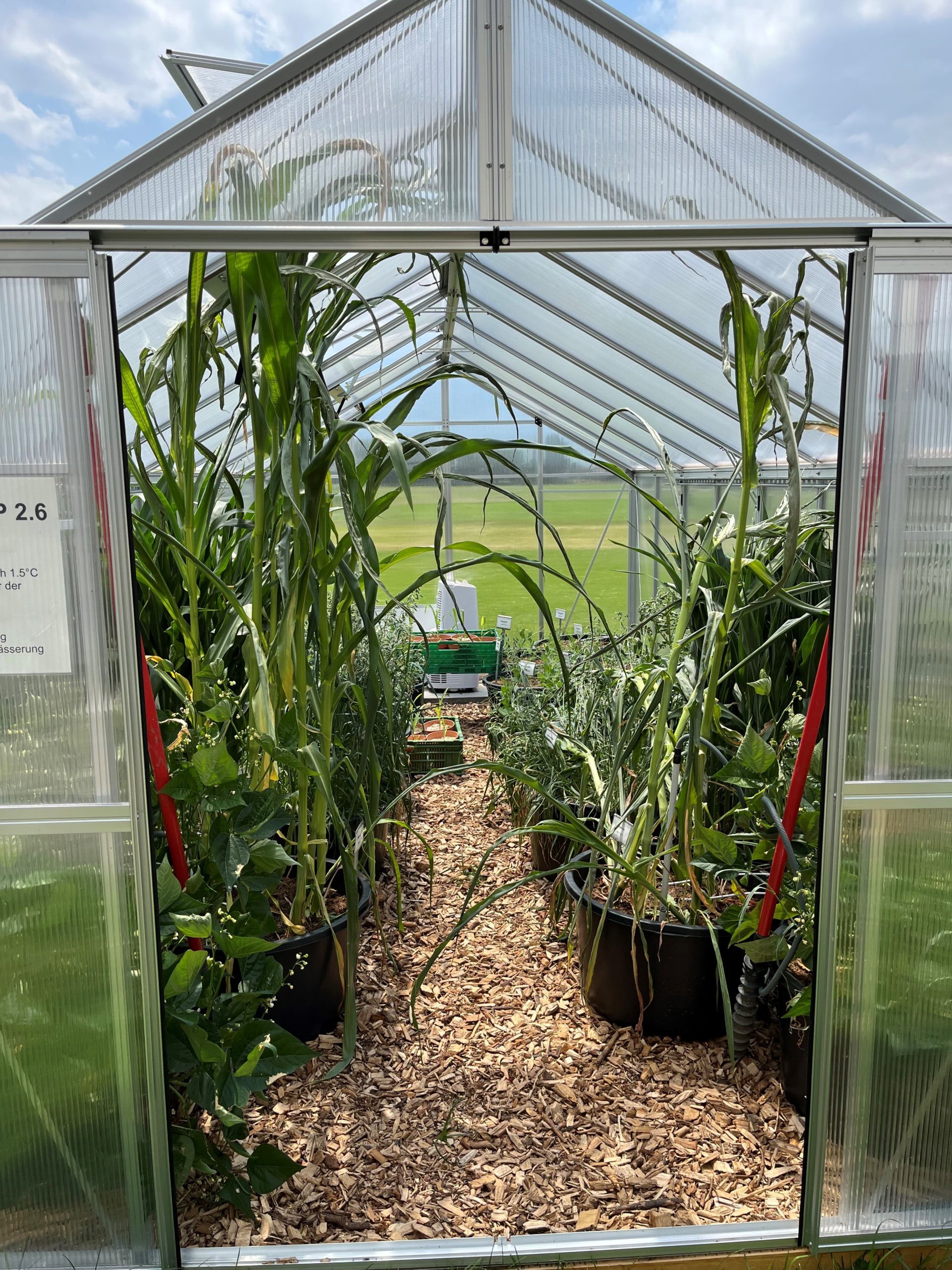

After a long phase of exciting observations during crop growth, we were able to harvest the plants that had remained largely healthy. In addition to the exciting results in terms of potato yield and the size distribution of the potatoes, we also enjoyed the culinary delights of the harvest. True to the motto “After the harvest is before the harvest”, we have now tackled the second sowing of winter crops such as winter white peas, bread wheat and rapeseed. We are now eagerly awaiting the emergence and development of the winter crops in the various climate scenarios.
Project team Climate Garden BZBS and LZSG
Salez, 23.8.2022
Translated from German


